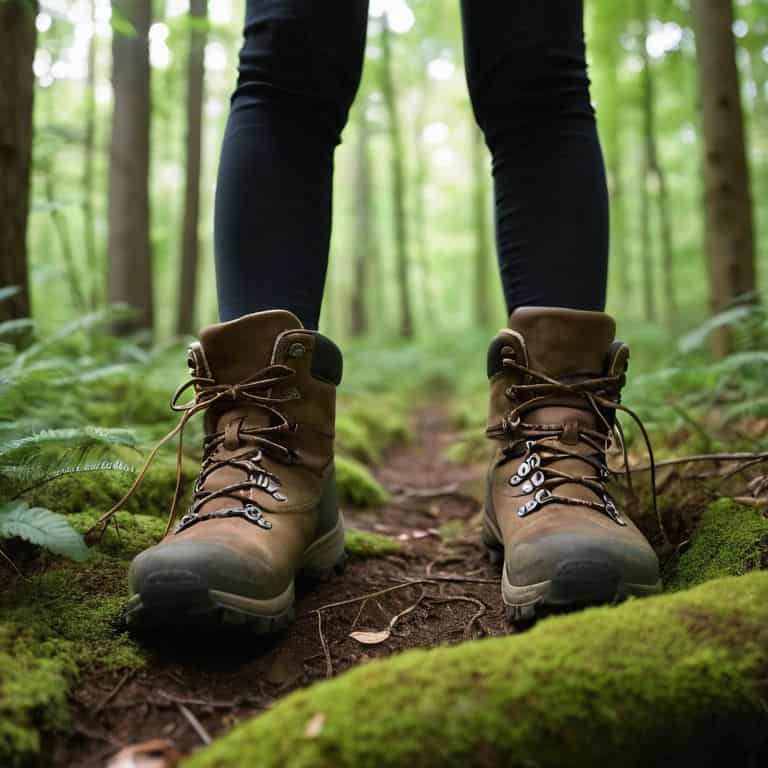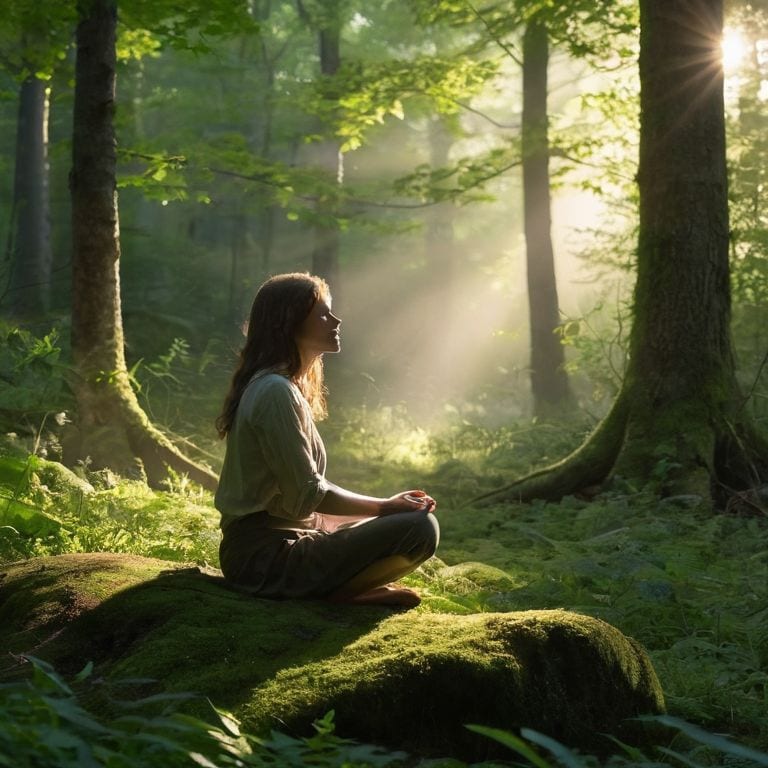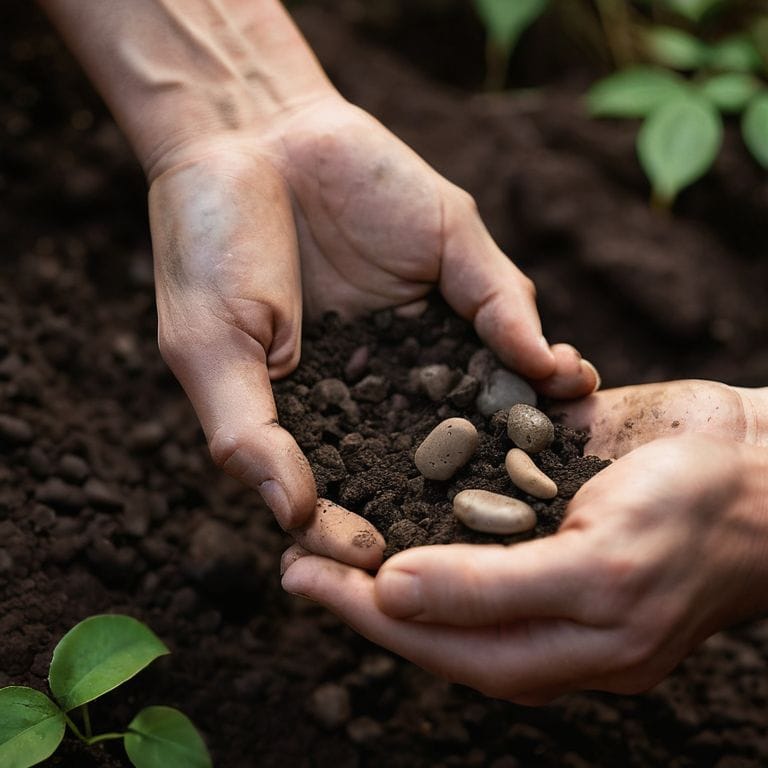To begin, take a deep breath in, and as you exhale, allow your attention to gently settle into the present moment. I still remember the day I realized that grounding techniques for anxiety weren’t just about managing symptoms, but about cultivating a sense of inner peace. For years, I struggled with anxiety, feeling like I was drowning in a sea of uncertainty. But as I delved deeper into the world of mindfulness, I discovered that grounding techniques for anxiety could be a powerful tool for finding calm in the midst of chaos.
As we explore the world of grounding techniques together, I want to assure you that this isn’t just about learning new strategies – it’s about embracing a new way of being. In this article, I’ll share practical, honest advice on how to use grounding techniques to anchor your mind and soothe your soul. You’ll learn how to use your senses to ground yourself in the present moment, and how to incorporate these techniques into your daily life. My goal is to provide you with a simple, yet powerful toolkit to help you navigate the challenges of anxiety, and to discover a sense of inner stillness that will stay with you long after you finish reading.
Table of Contents
Guide Overview: What You'll Need

Total Time: 30 minutes to 1 hour
Estimated Cost: $0 – $10
Difficulty Level: Easy
Tools Required
- Comfortable seating optional: pillows, blankets
Supplies & Materials
- Calming essential oils optional: lavender, chamomile
Step-by-Step Instructions
- 1. To begin, take a deep breath in through your nose and out through your mouth, feeling the gentle flow of air as it moves in and out of your body. As you exhale, allow any tension or stress to release, creating space for calmness to settle in.
- 2. Next, find a quiet and comfortable spot to sit or lie down where you can relax without distractions, allowing yourself to let go of any _mental chatter_ that may be present. Close your eyes and take a moment to notice the sensation of your body touching the ground or the chair, feeling the weight and solidity of your physical presence.
- 3. Now, bring your attention to your breath, focusing on the sensation of the air moving in and out of your nostrils. When your mind wanders, gently acknowledge the thought and softly refocus on your breath, without judgment or attachment. Repeat this process several times, allowing yourself to settle into the present moment.
- 4. As you continue to breathe deeply, expand your awareness to include your physical body, starting from your toes and moving up to the top of your head. As you focus on each area, release any _physical tension_ or discomfort, allowing your body to relax and let go of any stress or anxiety.
- 5. To further ground yourself, engage your senses by noticing the sights, sounds, and smells around you. Listen to the _gentle sounds_ of nature, such as birds chirping or leaves rustling, and allow the calming effects of these sounds to wash over you. If you’re indoors, notice the sensation of the air on your skin or the smell of a calming essential oil.
- 6. Next, try a simple mindful walking exercise: slowly get up from your seated position and take a few steps, paying close attention to the sensation of your feet touching the ground. Notice the weight distribution, the sensation of your feet rolling from heel to toe, and the movement of your legs and arms as you walk. Bring your attention back to your breath if your mind wanders, and continue walking slowly and deliberately.
- 7. Finally, take a few moments to _reflect on your experience_, noticing how you feel before and after practicing these grounding techniques. Allow yourself to integrate any insights or feelings that arise, and remember that you can return to this sense of calm and clarity whenever you need it, simply by taking a few deep breaths and focusing on the present moment.
Grounding Techniques for Anxiety

As I sit in stillness, surrounded by the serene beauty of nature, I’m reminded of the profound impact that sensory grounding techniques can have on our well-being. By tuning into the subtle sights, sounds, and scents around us, we can begin to calm the mind and soothe the nervous system. This is especially true for those who have experienced trauma, where mindful breathing exercises can be a powerful tool for regulating the body’s response to stress.
In my own practice, I’ve found that combining mindful breathing with body scan meditation can be a potent antidote to anxiety. By bringing awareness to the physical body, we can release tension and promote relaxation. This, in turn, can help to reduce symptoms of anxiety and improve overall mental health. Whether practiced in a quiet forest glade or a bustling city park, nature therapy offers a unique opportunity to cultivate inner peace and tranquility.
As we explore these practices, it’s essential to remember that self care for anxiety management is not a one-size-fits-all approach. What works for one person may not work for another, and that’s okay. The key is to approach these practices with an open mind and a willingness to experiment, allowing ourselves to settle into the present moment and find peace in the stillness.
Mindful Breathing Anchor to Calm
As we explore grounding techniques, let’s breathe in deeply and exhale slowly. Mindful breathing is a powerful anchor to calm, allowing us to gently return to the present. With each breath, feel your body relax and your mind quiet.
I invite you to take a few mindful breaths with me: inhale for a count of four, hold for a count of two, and exhale for a count of four. As you breathe, bring your attention to the sensation of the air moving in and out of your body. Allow any thoughts or worries to drift away with each exhale, creating space for calm and clarity to emerge.
Sensory Grounding Natures Solace
To find calm, let’s breathe in deeply, and as we exhale, allow our senses to unfold. Sensory grounding is about embracing the world around us, and what better way to do this than by immersing ourselves in nature? I find solace in the gentle rustle of leaves or the soft chirping of birds. By focusing on these sensory details, we can anchor ourselves in the present, letting go of anxious thoughts.
As we walk in nature, let’s notice the sensation of our feet touching the ground, the texture of the earth beneath us. Or, if we’re indoors, let’s gaze out the window, observing the play of light on the trees or the colors of the sky. In these simple, sensory moments, we find peace, reminding ourselves that calm is always available, just a breath away.
Finding Peace in the Present: 5 Gentle Grounding Tips for Anxiety

- Take a deep breath in, and as you exhale, bring your attention to the sensation of your feet touching the ground, feeling the weight and connection to the earth
- Notice the smallest details in nature, like the sound of a bird singing or the gentle rustle of leaves, to bring your mind back to the present moment
- Practice mindful breathing by focusing on the sensation of the breath moving in and out of your body, without trying to change it or control it, just observing its gentle rhythm
- Use sensory grounding techniques like touching a calming texture, such as a soft blanket or a smooth stone, to calm your nervous system and soothe your mind
- Take a few moments each day to sit in silence, eyes closed, and simply focus on the sensation of the breath, allowing yourself to settle into the stillness and quiet of the present moment
Embracing Inner Peace: 3 Key Takeaways
Remember to breathe, and let the simplicity of your breath be the anchor that gently guides you back to the present moment, especially when anxiety arises
By incorporating mindful breathing and sensory grounding techniques into your daily life, you can begin to weave a sense of calm and clarity into even the most chaotic of days
As you explore these grounding practices, recall that the goal isn’t to achieve a specific state, but to cultivate a deeper sense of kindness and compassion towards yourself, allowing you to find solace in the silence within
Finding Peace in the Present
As we breathe into the present, may we remember that grounding techniques are not just tools to calm the mind, but gentle reminders that peace is always within us, waiting to be uncovered.
Elara Keane
Embracing Peace: A Gentle Conclusion
As we conclude our journey through grounding techniques for anxiety, let’s take a moment to reflect on the simple yet profound practices we’ve explored. From mindful breathing to sensory grounding in nature, these techniques offer a powerful reminder that peace is always within reach. By incorporating these practices into our daily lives, we can cultivate a sense of calm and clarity, even in the midst of chaos. Remember, the goal is not to achieve a specific state, but to gentlely return to the present moment, again and again.
As you move forward, I invite you to carry the spirit of mindfulness with you, allowing it to infuse your daily experiences with a sense of wonder and curiosity. May you find solace in the silence, and may your heart remain open to the beauty and peace that surrounds you. In the stillness, may you discover a deeper connection to yourself and the world around you, and may this connection be a guiding light on your path towards greater calm, clarity, and inner peace.
Frequently Asked Questions
How can I incorporate grounding techniques into my daily routine to manage anxiety?
To incorporate grounding into your daily routine, start small: take one mindful breath before each meal, or pause to notice the sensation of your feet on the ground when you wake up. As you practice, these moments of calm will become anchors, helping you stay present and centered amidst life’s chaos.
What are some common obstacles to practicing grounding techniques and how can I overcome them?
As you cultivate grounding practices, remember that distractions are inevitable. Gently acknowledge them, and refocus on your breath. Be patient with yourself, and don’t be discouraged by a wandering mind. With time, you’ll find that the stillness within becomes more accessible, and the chaos outside less overwhelming. Take a deep breath in, and when you’re ready, exhale slowly, allowing calm to settle in.
Can grounding techniques be used in conjunction with other therapies or treatments for anxiety, and if so, how?
As I sit in stillness, take a deep breath in, and exhale slowly. Grounding techniques can beautifully complement other therapies, such as cognitive-behavioral therapy or medication, to enhance their effectiveness in managing anxiety. By incorporating mindful breathing and sensory grounding, you can deepen your practice and find greater calm, allowing these therapies to have a more profound impact on your journey towards serenity.
